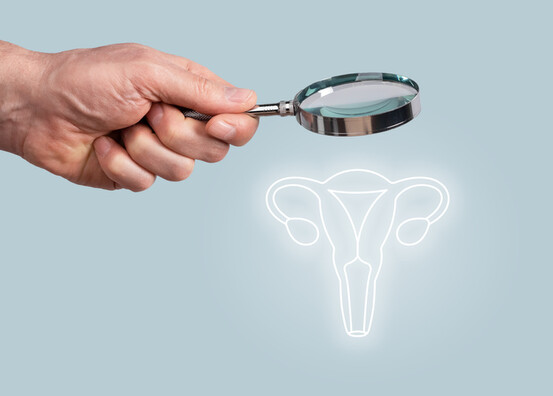Pain, bleeding, fatigue and infertility are daily life for 10% of women affected by endometriosis. This pathology, the causes of which are still unknown, suffers from a lack of recognition by the medical profession, which offers few treatments. Fortunately, natural solutions can reduce pain and even reverse the disease. In the first part of this series, let’s first learn to recognize the symptoms of endometriosis.
If endometriosis is so often underdiagnosed, it is mainly because its risk factors, as well as its main symptoms, are poorly understood by patients and therapists. Let’s do a check.
Short cycles, pregnancy, age: risk factors for endometriosis
Endometriosis occurs mainly in women of childbearing age, with a maximum frequency of around 40 years. A risk factor largely influenced by the frequent delay in diagnosis in this disease (seven years on average). There are few cases of endometriosis after menopause, but Norwegian research estimates that 97% of postmenopausal women with endometriosis are pain-free.
The other two common factors areyou have short cycles (less than twenty-eight days), heavy and prolonged periods (more than seven days) and had premature menstruation (before the age of twelve). In addition, we find a significantly higher number of cases in women of short stature (low BMI between 19 and 20) than in women with a high BMI (above 30).
PUSH the presence of an autoimmune site may also play a role because in patients with endometriosis we find more lupus, rheumatoid arthritis, hypothyroidism, non-Hodgkin’s lymphoma, multiple sclerosis, asthma or allergies. Finally, genetic predispositions can weigh in, as 5 to 8% of mothers suffering from the disease could pass it on to their daughters. On the other hand, although this connection is not very clear, the risk of developing endometriosis decreases with the number of pregnancies (this may be a bias related to the fact that endometriosis often causes infertility, it occurs less in these women).
Pain, infertility, urinary disorders: the main symptoms to recognize
THE dysmenorrhea they are one of the first symptoms of endometriosis and affect 75 to 90% of patients. It is pelvic pain that appears before menstruation and lasts for 12 to 72 hours. They are intermittent, precise and spasmodic resistant to simple analgesics and generally have a significant impact on social-professional life. They radiate towards the buttocks and thighs, especially in cases of rectal endometriosis.
Present in 40% of cases, abdominal-pelvic pain Chronic infections are more common in cases of endometriosis creating deep intestinal adhesions. They are not very specific and variable, it is necessary to combine them with other factors to make a diagnosis. THE digestive disorders are also common, such as diarrhoea, constipation, rectal bleeding, rectal pain and painful defecation1.
Up to 90% of women with endometriosis have difficulty conceiving. Infertility is therefore another symptom of this pathology, which varies depending on the area affected: 85% in the case of endometriosis located in the fallopian tubes, 36% in the case of peritoneal endometriosis (the peritoneum is the membrane that lines the abdominal walls). ) and 25% in ovaries. of pain during intercourse (called “dyspareunia”) are a recurring symptom, especially with “trigger zones” that are painful in certain positions.
THE urinary problems are found in 2% of cases (and in 11% of cases of deep endometriosis). Hemorrhagic cycle disorders (heavy bleeding during or outside of menstruation) are also common, especially in cases of adenomyosis (read the box below).
Adenomyosis: “internal” endometriosis
Adenomyosis, also called “internal” endometriosis, is endometriosis of the myometrium, the inner muscular layer of the lining of the uterus. She it affects 90% of women who have several children and often affects women who have had a late first period.
In more than half of the cases history of trauma (abortion or curettage for biopsy) or gynecology surgery – other than caesarean section.
If intrauterine device (IUD) is a factor found in almost 30% of cases, there is no evidence that it is a risk factor.

